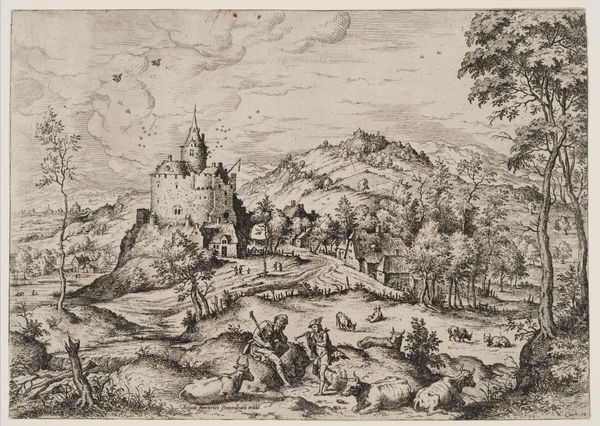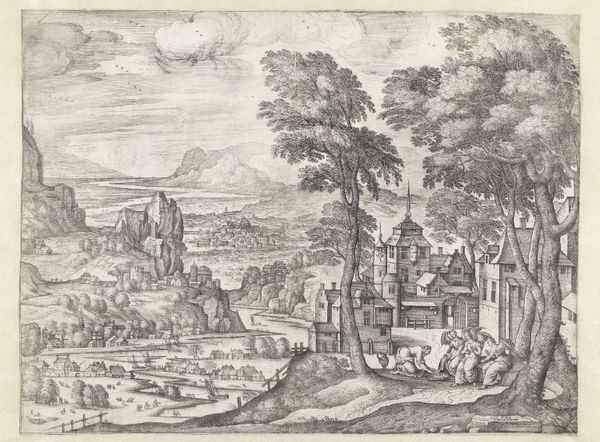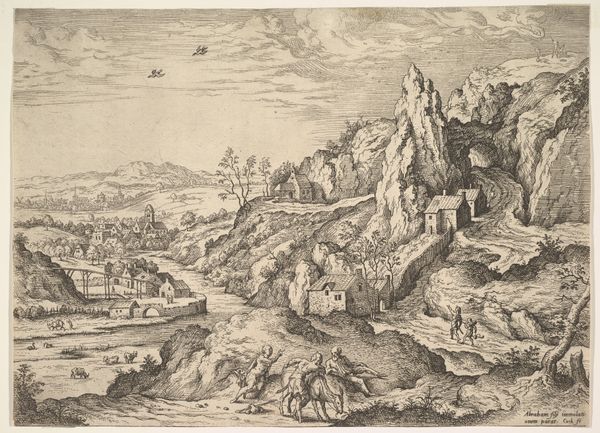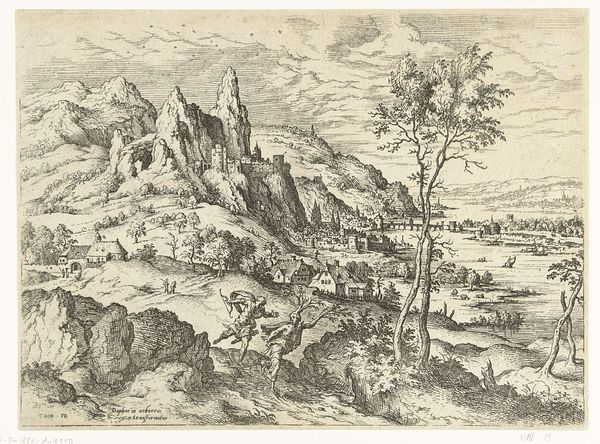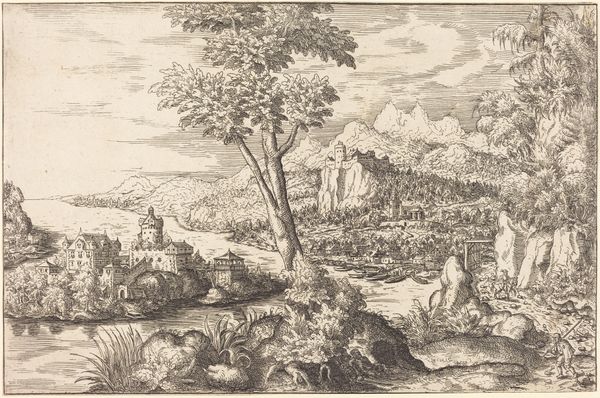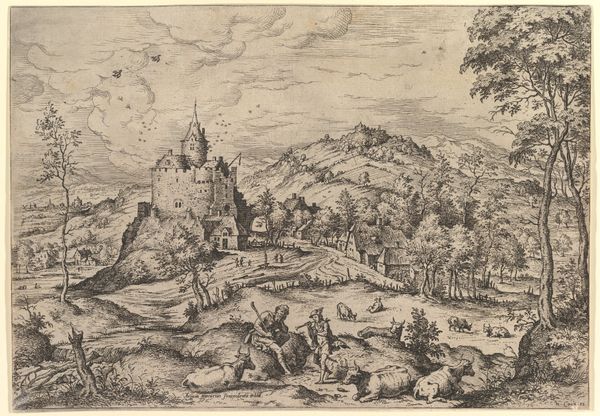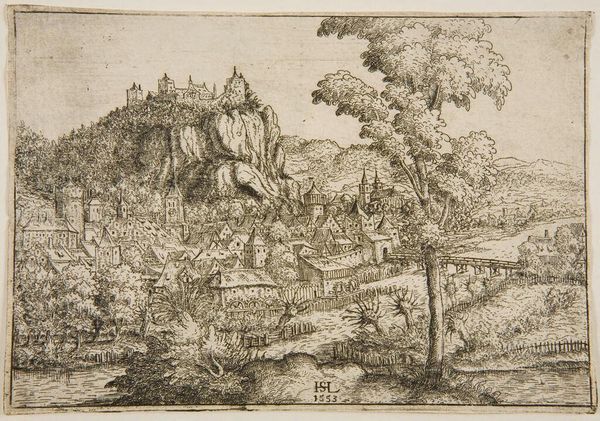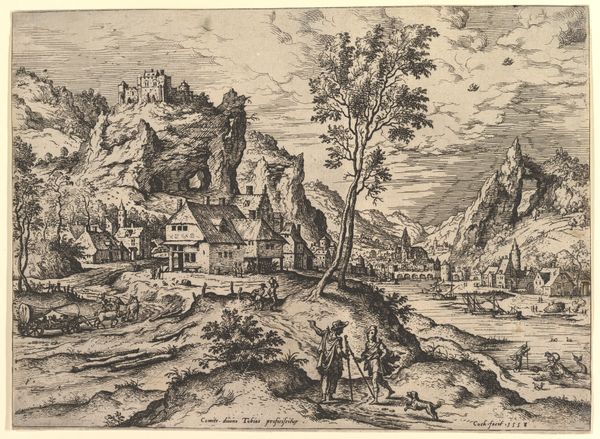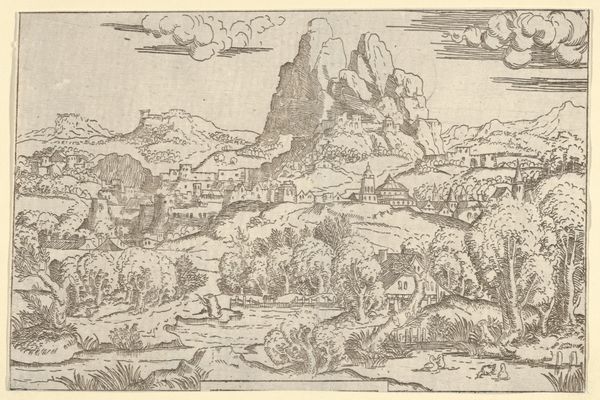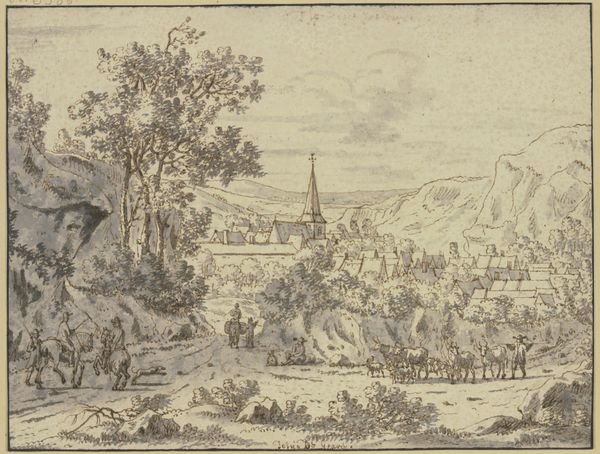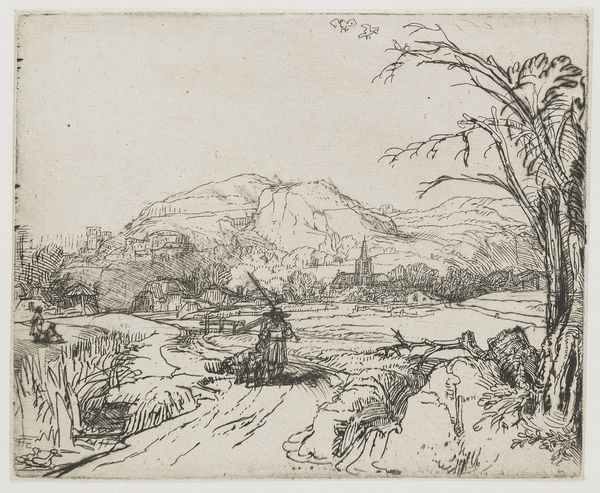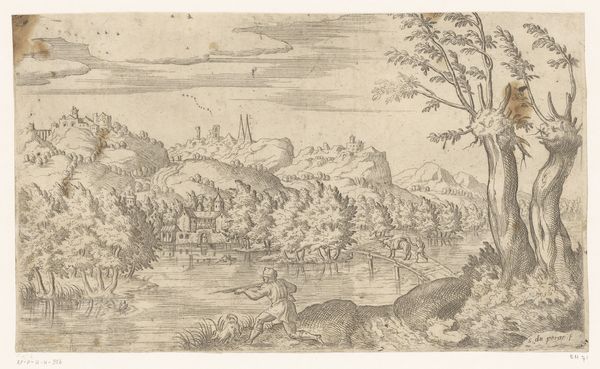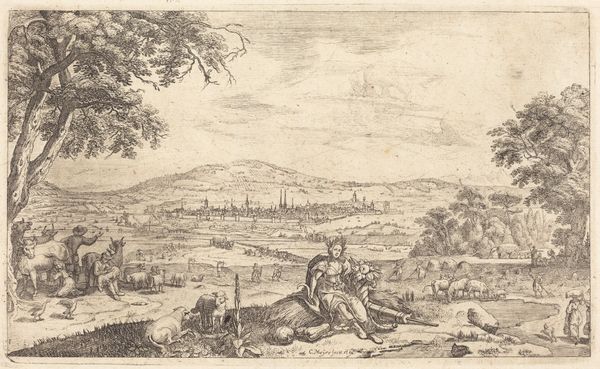
Panoramic Mountainous Estuary Landscape, with Christ and the Woman of Canaan 1515 - 1575
0:00
0:00
drawing, print, etching, intaglio
#
drawing
# print
#
etching
#
intaglio
#
landscape
#
house
#
figuration
#
cityscape
#
history-painting
#
northern-renaissance
#
christ
Dimensions: 10-9/16 x 15-1/16 in. (26.8 x 38.3 cm)
Copyright: Public Domain
Editor: So, this is "Panoramic Mountainous Estuary Landscape, with Christ and the Woman of Canaan" by Lucas Gassel, dating from sometime between 1515 and 1575. It's an intaglio print. The detail is astonishing. I’m immediately drawn to the juxtaposition of the biblical scene in the foreground with the vast landscape, the daily life around it seeming almost indifferent. What strikes you most about this work? Curator: What resonates with me is precisely that tension you identify. Consider the power dynamics inherent in this landscape. The story of Christ and the Woman of Canaan, a narrative of faith tested and ultimately rewarded, unfolds within a specific social hierarchy. Gassel places this intimate moment of interaction between marginalized identity and religious authority against the backdrop of burgeoning cities and trade routes. Can we see the hints of colonial expansion beginning to shape European consciousness here, informing notions of self and other? Editor: That’s a really interesting point. The landscape feels so classically Northern Renaissance, almost idealized, and yet you’re suggesting it hints at a broader societal shift… Curator: Exactly. Consider who had access to such landscapes, both in reality and representation. Who controlled these burgeoning cities and trade? This image subtly reinforces those structures even as it depicts a story of supposed inclusion. Notice how Christ is positioned in relation to the crowd observing, to the woman… What statement might Gassel be making? Editor: I see. So it's not just a beautiful landscape with a biblical scene; it's an active commentary on the socio-political landscape of the time, reflecting the complex interplay of faith, power, and identity. The layers are quite powerful. Curator: Precisely. Art serves as a potent mirror, reflecting and refracting the very societies that create it. Looking closer often prompts deeper questioning about accepted narratives. Editor: I’ll definitely carry that with me. It changes how I understand art and its role in reflecting history.
Comments
No comments
Be the first to comment and join the conversation on the ultimate creative platform.
